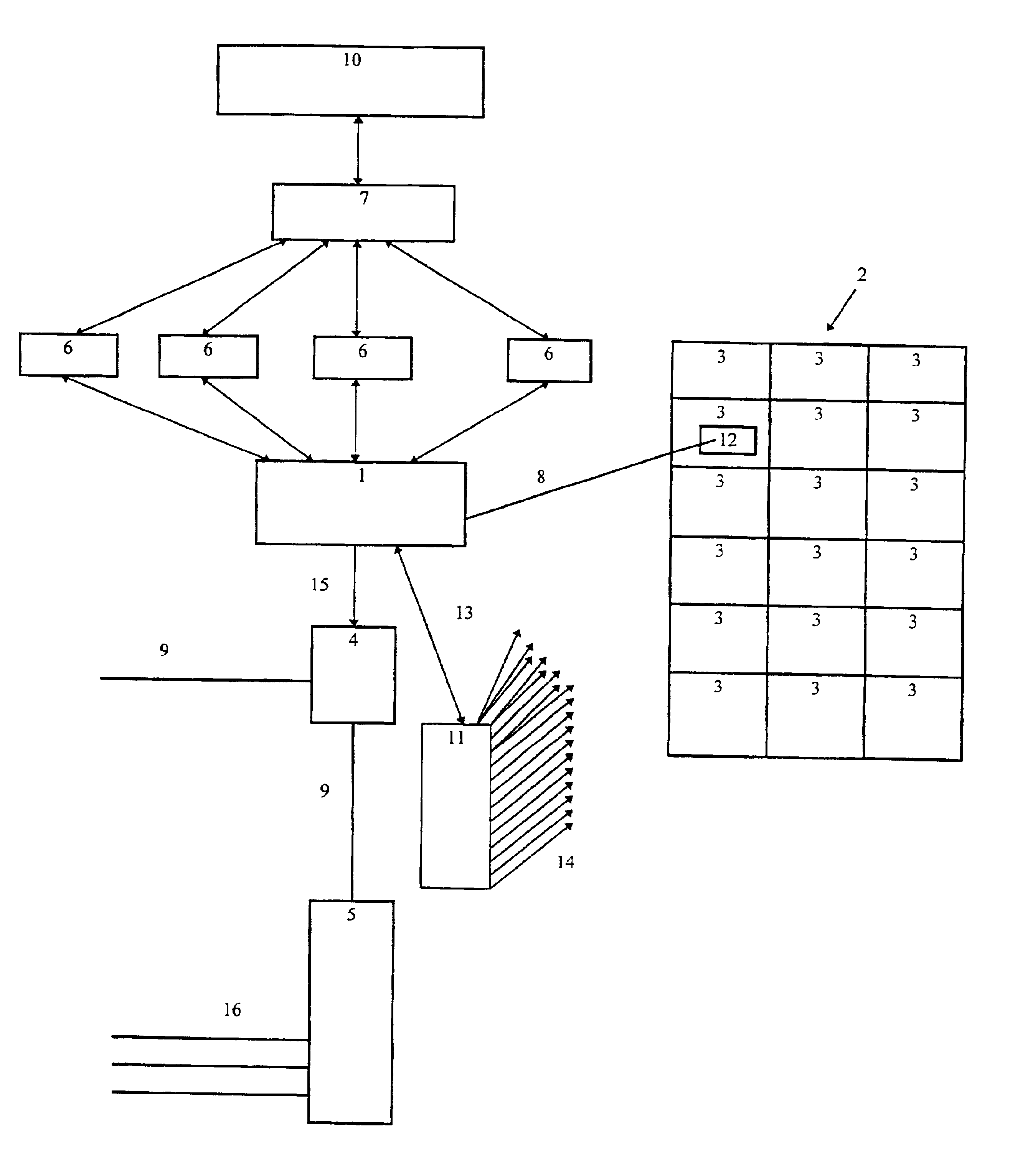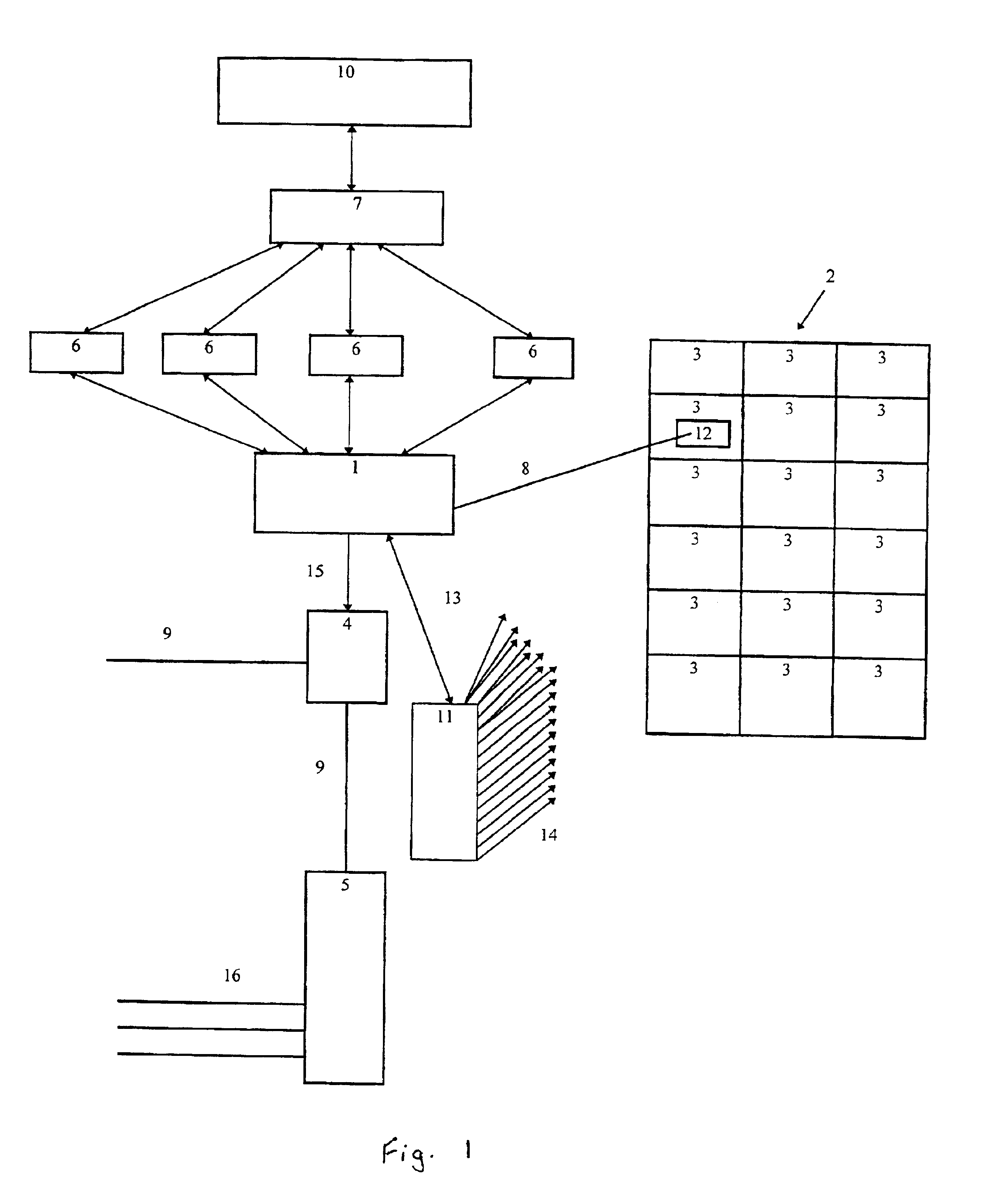Irrigation control system
a control system and irrigation system technology, applied in the field of irrigation control system, can solve the problems of large amount of water wasted, over-irrigation, and water wastage, and achieve the effect of accurate management of irrigation of an area and minimising over-irrigation and hence water wastag
- Summary
- Abstract
- Description
- Claims
- Application Information
AI Technical Summary
Benefits of technology
Problems solved by technology
Method used
Image
Examples
Embodiment Construction
The invention will now be further explained and illustrated by reference to the following practical embodiment concerning steps (b) and (c) of the control system when dealing with the radar data.
As stated above, at present meteorological weather radars are commonly installed to cover the area of major cities. In the current example this area would be seen as the first area. The output of these radars is a stream of data organised in the following fashion:Radially—each degree of rotation from 000 through to 360 is reported separately.Longitudinally—for each degree of rotation, data is presented as a series of rain intensity figures, typically for each kilometer along each radii. For example 095 / 35 / 9 may mean that rain intensity of “9” is falling 35 kilometers from the radar transmitter on a bearing of 095 degrees from the transmitter.
This radar data may be processed as follows according to one aspect of the invention.
1. Firstly a “plane geometry” program is created and initialised. T...
PUM
 Login to View More
Login to View More Abstract
Description
Claims
Application Information
 Login to View More
Login to View More - R&D
- Intellectual Property
- Life Sciences
- Materials
- Tech Scout
- Unparalleled Data Quality
- Higher Quality Content
- 60% Fewer Hallucinations
Browse by: Latest US Patents, China's latest patents, Technical Efficacy Thesaurus, Application Domain, Technology Topic, Popular Technical Reports.
© 2025 PatSnap. All rights reserved.Legal|Privacy policy|Modern Slavery Act Transparency Statement|Sitemap|About US| Contact US: help@patsnap.com


